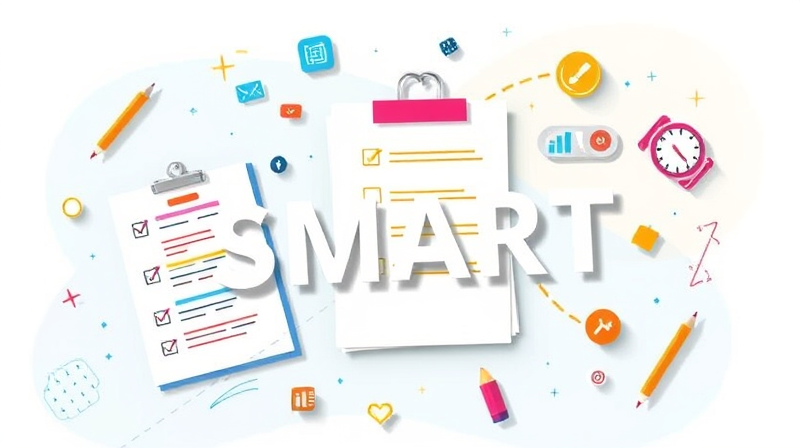In today’s fast-paced world, the journey toward success begins with setting clear, compelling, and achievable goals. Whether you are a professional looking to advance your career or a lifelong learner aiming to master new skills, using the SMART framework can help you transform your ambitions into reality. With the ability to shape your future significantly, setting goals that are Specific, Measurable, Attainable, Relevant, and Time-bound has never been more important.
This article provides an in-depth guide on how to build effective learning goals using the SMART method. Drawing on recent data and strategies for 2025, we explore how you can create structured and inspiring objectives that make a profound impact on both your personal and professional development.
The SMART Framework Explained
The SMART framework is built on five essential elements designed to convert abstract aspirations into well-defined plans. It is a method popularized by George T. Doran and has become a cornerstone in goal setting. When you set goals following the SMART criteria, you can monitor measurable progress and remain motivated throughout your journey.
Specific goals are the first step in this process. They require you to clearly define what you intend to achieve. For example, instead of vaguely stating, "I want to improve my skills," you must decide exactly which skill you aim to enhance, such as mastering digital marketing strategies.
- Ask yourself: What do I want to accomplish exactly?
- Examine the impact: Will this achievement bring significant benefits?
- Plan concrete steps: What actions am I prepared to take to reach this goal?
This kind of specific questioning ensures that every step you take is aligned with your ultimate objectives.
Measurable objectives are the next critical element. They provide you with clear criteria to assess your progress as you move forward. A measurable goal might require you to complete a number of modules or achieve a specified score on evaluations, ensuring that your progress is visible and quantifiable.
For instance, if you are aiming for professional growth, you could set a goal such as, "Score at least 85% on all assessments for a digital marketing certification course." By defining numerical targets, you remain both accountable and motivated.
The third component, attainability, encourages you to set realistic goals. It’s essential to make sure that your targets are challenging yet achievable. Reflect on whether you have enough resources, time, and support to meet your objectives. Always consider if you might need preliminary learning steps to bridge the gap between your current skill level and your intended goal.
An example of an attainable goal could be planning to complete an online course in a specific timeframe while balancing your current workload. This involves estimating the effort required and ensuring that it fits within your available schedule and available resources.
After ensuring your goal is both specific, measurable, and attainable, the next step is to check that it remains relevant to your broader ambitions. Goals should align with your overarching career aspirations and personal values. Reflect on whether this learning objective will help tackle present challenges or contribute meaningfully to your long-term vision.
For many individuals and professionals, setting relevant goals direct your energy towards growth that harmonizes with your future development plans. For example, investing time in a coding bootcamp could be directly relevant if you aspire to switch careers or upgrade your technical skills.
Finally, the element of being time-bound introduces necessary urgency. Deadlines coupled with milestones push you to act and deter the tendency to procrastinate. Establishing time constraints encourages you to structure your efforts methodically and review your progress at regular intervals.
A time-bound goal might include launching a new learning project by a set date or acquiring a certification within a specific quarter. This clearly demarcates when you expect to see progress, making your objective much more tangible.
Implementing Your SMART Learning Goals
Once you’ve designed your SMART learning goals, the next phase is putting them into practice. A practical strategy includes visualizing your objectives using goal-setting templates that capture every aspect of your chosen SMART criteria. These tools help you break down overarching goals into manageable segments.
Moreover, regularly reviewing your progress is key. Maintaining a schedule for evaluations allows you to recognize small victories along your journey and adjust strategies if necessary. Consistent reviews ensure that you remain flexible and motivated, even if your original plan requires modifications due to unexpected challenges.
Celebrating milestones is also an essential aspect of the process. Recognizing and rewarding yourself for reaching smaller goals can significantly boost motivation. Whether it is a simple break or a short celebration, these moments of joy reinforce your commitment to the learning process.
By sharing your SMART goals with peers, mentors, or a professional network, you build a community of support that enriches your learning experience. Collaborative goal setting offers extra accountability, helping you stay on track while also opening the door to shared insights and innovative strategies.
Embracing the SMART framework not only inspires you to set clearer, more achievable goals but also lays out a structured roadmap toward success. The method is designed to help you progress step-by-step and celebrate every achievement, turning what once was a daunting challenge into an exciting journey of growth and development.
In conclusion, while the path to success may appear complex, transforming vague intentions into structured, SMART goals simplifies the process. With each specific, measurable, attainable, relevant, and time-bound objective, you create a powerful exit from inaction toward success and fulfillment. This inspiring framework is your key to unlocking the doors to continuous improvement, professional success, and personal satisfaction in the dynamic environment of 2025 and beyond.








